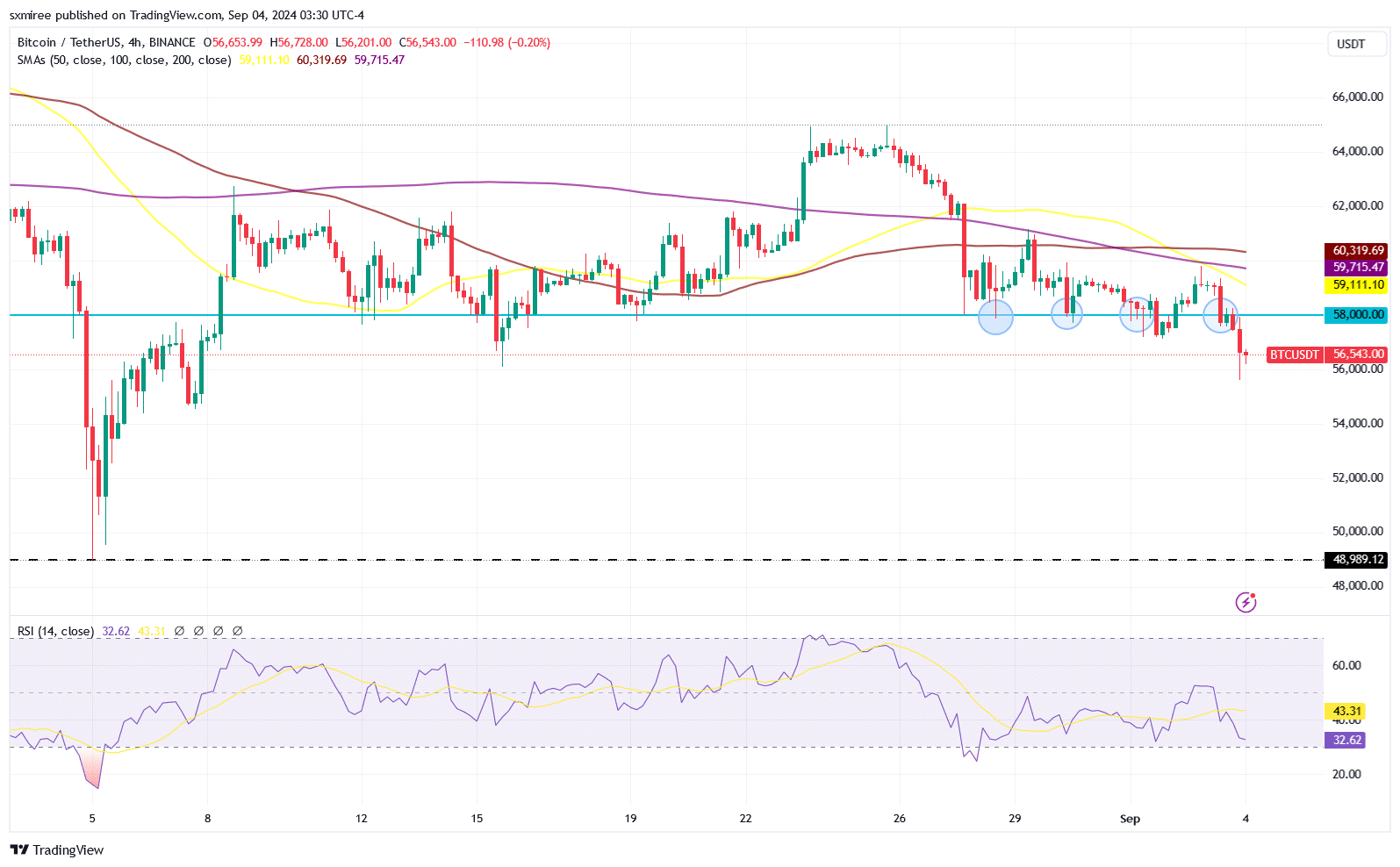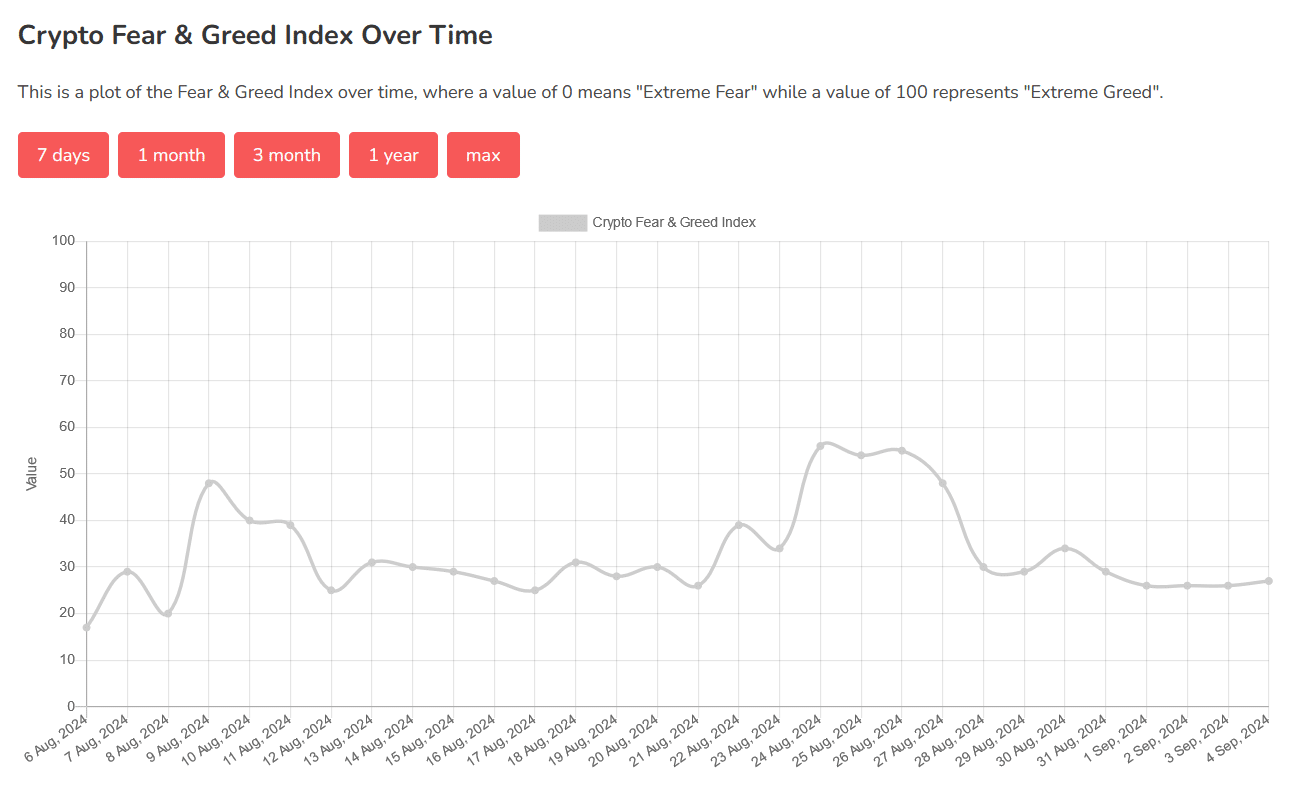- The total cryptocurrency market cap falls below $2 trillion for the first time since the global markets crashed on August 4.
- Historical data shows that September is an ideal month for accumulation in anticipation of October gains.
Bitcoin fell below $58,000 on September 3, marking the fourth decline below the crucial high in the past seven days on the BTC/USDT 4-hour chart.
The price action tied to bearish price action came on the back of a disappointing performance in August, which saw Bitcoin lose 8.6%, according to Coinglass data, wiping out July’s mild gains.

Source: TradingView
The flagship cryptocurrency continued its decline early Wednesday, September 4, trading as low as $55,673 on Binance, amid contagion from steep losses in the US and Asian stock markets.
“Magnificent 7 stocks wiped out $550 BILLION in market cap today. Nvidia, $NVDA, is on track for its biggest daily decline since April 2024.” sources for market commentary Kobeissi Letter wrote.
Meanwhile, the overall crypto market fell below $2 trillion at the height of the slump – for the first time since August 4.
The broader market routine is attributed to comments from the Governor of the Bank of Japan (BoJ). This signals more interest rate hikes, reigniting fears about the health of the global economy.
Frighteningly identical crypto market decline
This week’s crypto and stock market sell-off mirrors the global market crash in early August due to a similar scare after the BoJ raised benchmark interest rates in late July.


Source: TradingView
Interestingly, despite the market pullback, the Crypto Fear & Greed Index rose to 27 today after remaining unchanged at 26 points in the first three days of the month.


Source: Alternative.me
Although September is historically Bitcoin’s worst month, with an average downside of 4.5%, market participants are still betting on a return of upside-inspiring volatility.
Macrovolatility: BoJ, Federal Reserve interest rate decisions
A new wave of U.S. economic data this month, starting with August nonfarm payrolls data due Sept. 6, could strengthen or undermine the prevailing narrative of a slowing U.S. economy.
The July NFP report from early August revealed a rise in US unemployment from 4.1% to 4.3%, putting downward pressure on global markets.
Outside the US, the Bank of Japan’s policy decision is another factor worth keeping a close eye on. The BoJ’s decision to raise rates at the end of July, combined with a poor US jobs report for July, raised concerns the Fed is lagging behind in its interest rate cuts at the expense of risky assets in early August.
Consequently, on August 23rd speech On the US economic outlook, the Federal Reserve chairman asserted that the time for policy adjustment had come.
Rates are expected to be cut by 25 basis points at the upcoming Federal Open Market Committee (FOMC) meeting on September 18. An outcome in line with this projection would create a potentially favorable monetary environment for riskier assets such as crypto.
Read Bitcoin’s [BTC] Price forecast 2024–2025
That said, a weak US jobs report in August could force an aggressive 50 basis point cut, which could escalate recession concerns and lead to a correction.
On the other hand, a strong report could completely influence the Fed’s decision on whether to begin rate cuts. Nevertheless, both outcomes present an opportunity for volatility.

